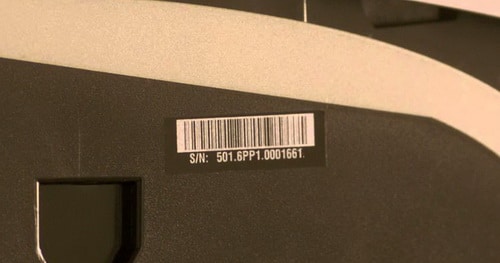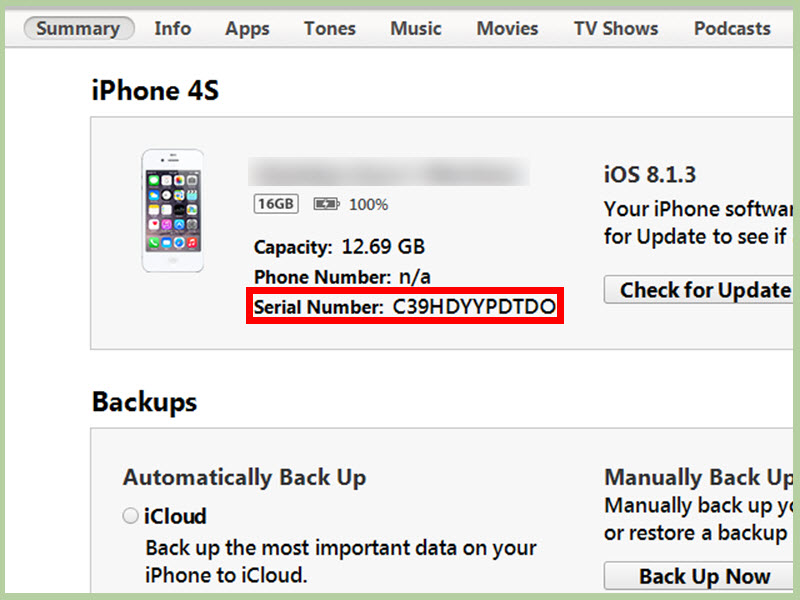At first glance, you look at the sidewall of your tire and think, “’Do I need a super secret decoder ring to read this?” In addition to the model name of the tire there is a series of numbers that at first, you don’t deem important. However, these numbers are extremely helpful, especially when it’s time to replace your tires. Here’s a quick breakdown to help you decipher one of the best kept secrets in the automotive world.
TIRE SIZE
Example: P225/50/R17 98H
P identifies your tire as a Passenger Tire. The P stands for PMetric. If your tire size starts with LT rather than a P than it identifies the tire as a Light Truck tire.
225 identifies the tire section width, which is the measurement of the tire from sidewall to sidewall in millimeters. This measurement varies depending on the rim to which it is fitted.
(There are 25.4 millimeters per 1 inch. )
50 is the two-figure aspect ratio. This percentage compares the tire's section height with the tire's section width. For example, this aspect ratio of 50 means that the tire's section height is 50% of the tire's section width.
R indicates the construction used within the tires casing. R stands for radial construction. B means belted bias and D stands for diagonal bias construction.
17 The last dimension listed in the size is the diameter of the wheel rim, which is most often measured in inches.
LOAD INDEX AND SPEED RATING
Example: P225/50/R17 98H
The load index and speed rating, or service description, are the numbers that follow the tire size.
The load index tells you how much weight the tire can support when properly inflated. Load indices range from 75 - 105 for passenger tires, with each numeric value corresponding to a certain carrying capacity. The carrying capacity for each value can be found on a load index chart. On each U.S. passenger car tire, the load limit is listed in pounds. European tires have the load limit listed in kilograms and sometimes pounds.
The carrying capacity for each value can be found on a load index chart. On each U.S. passenger car tire, the load limit is listed in pounds. European tires have the load limit listed in kilograms and sometimes pounds.
H Speed ratings are represented by letters ranging from A to Z. Each letter coincides to the maximum speed a tire can sustain under its recommended load capacity. For instance, S is equivalent to a maximum speed of 112 mph. Even though a tire can perform at this speed, Continental Tire does not advocate exceeding legal speed limits.
Rating | Maximum Speed |
Q | 100 MPH |
S | 112 MPH |
T | 118 MPH |
U | 124 MPH |
H | 130 MPH |
V | 149 MPH |
W | 168 MPH |
Y | 186 MPH |
Z | Over 149 MPH |
DOT Serial Number
The "DOT" symbol certifies the tire manufacturer's compliance with the U. S. Department of Transportation (DOT) tire safety standards. Tires made in the United States have the DOT serial number located on the inside sidewall near the rim.
S. Department of Transportation (DOT) tire safety standards. Tires made in the United States have the DOT serial number located on the inside sidewall near the rim.
Below is a description of the serial number. Starting with the year 2000, four numbers are used for the Date of Manufactuer, first two numbers identify the week and the last two numbers identify the year of manufacture.
Prior to year 2000 three numbers are used for the date of manufacture, first two numbers identify the week and the last number identifies the year of manufacture. To identify tires manufactured in the 90s, a decade symbol (a triangle on its side) is located at the end of the DOT serial number.
If you look closely at any tire, you can find an engraved DOT number. This number gives you valuable insights into the tires keeping you safe. However, it is not always clear to drivers what their DOT number is communicating. The local auto mechanics are here with the full breakdown of how to read a tire’s DOT number.
Every tire identification number begins with the letters DOT (Department of Transportation). It is a marker that verifies you are getting tires that meet the Department of Transportation’s guidelines. It also serves as a clear, universal starting point for a tire’s TIN (tire identification number).
The next group of numbers contains two characters that indicate your tire’s plant code. Every tire manufacturing plant has a unique two-character code, often made with one number and one letter. Why is this important? If there is a tire recall, safety issue, or another tire concern, it can be traced back to the plant that produced the tire(s) in question.
The next two numbers or letters are your tire size code. The tire size code is a little less straightforward than other markings. Originally, the National Highway Traffic Safety Administration (NHTSA) had a universal list of tire sizes and the two-digit codes that represented them. However, the DOT now lets manufacturers determine their own code for tire size, according to the US Federal Register. This change was intended to make it easy for manufacturers to produce new tires without requiring the NHTSA to update its code list. Unfortunately, it makes it challenging to translate the tire size on your tire’s DOT number. Thankfully, there is an easier way to tell your tire size (more on this below).
However, the DOT now lets manufacturers determine their own code for tire size, according to the US Federal Register. This change was intended to make it easy for manufacturers to produce new tires without requiring the NHTSA to update its code list. Unfortunately, it makes it challenging to translate the tire size on your tire’s DOT number. Thankfully, there is an easier way to tell your tire size (more on this below).
The third set of values indicates the manufacturer’s characteristics. It is essentially a space for manufacturers to provide tire distinction or other brand-specific insights. The US Federal Register states, “The third grouping may be used at the manufacturer’s option to provide any other significant characteristics of the tire. Except for cases in which a tire is manufactured for a brand name owner, the third grouping is not required.” Manufacturers then submit their list of codes to the National Highway Traffic Safety Administration.
Much like the tire size code, this grouping often does not provide valuable information for drivers. It is more so used for recalls, errors, and other official identification needs.
Without ever touching the road, a tire can go bad simply due to its age. After 5 years of age, tires begin experiencing thermo-oxidative degradation. This chemical reaction can severely impact tire safety on the road.
The final four digits on your DOT number will tell you the tire’s age. The first two numbers of this grouping indicate the week of the year your tire was manufactured. The final two digits indicate the year that your tire was manufactured. For example, if your final four DOT numbers are 3020, your tire was manufactured in the 30th week of 2020. You can find more information in our full guide to tire age here.
While DOT numbers are helpful, they might not tell you everything you need to know about your tires. As tire experts, we often have customers ask:
As tire experts, we often have customers ask:
Many drivers expect to find the answers to these and other questions in their DOT number, but this is not the case. Tires brands often include additional insights on the face of the tire. However, it is frequently much easier to view tire information on your tire panel. If you open your driver’s-side door and turn to face the seat, you will find a sticker against your door frame with information about your tires. You can also find additional details in your owner’s manual.
When you are due for new tires, the mechanics at Chapel Hill Tire are here for you. We proudly serve the greater Triangle area with our 10 locations across Raleigh, Apex, Cary, Durham, Chapel Hill, and Carrboro. Our mechanics also commonly serve nearby areas, including Knightdale, Pittsboro, Wake Forest, Hillsborough, Morrisville, and beyond. You can conveniently buy your new tires online using our Tire Finder tool. For all of your tire services, vehicle services, and car care needs, make an appointment today with your nearest Chapel Hill Tire.
Our mechanics also commonly serve nearby areas, including Knightdale, Pittsboro, Wake Forest, Hillsborough, Morrisville, and beyond. You can conveniently buy your new tires online using our Tire Finder tool. For all of your tire services, vehicle services, and car care needs, make an appointment today with your nearest Chapel Hill Tire.
Back to Resources
home
/ Articles
/ What is a DOT number? What is it for
07/09/2019
Anyone who would like to purchase truck tires should have at least a general idea of what a DOT number is.
DOT number is an alphanumeric sequence of characters. This sequence encodes information about the tire manufacturer, as well as the date of production, place of production and design features of the tire.
Usually, a DOT number is applied to all tires in order to make it easier for sellers and buyers to identify them. If you understand what the DOT number means, you can choose much more suitable tires for special equipment that can withstand even the most difficult operating conditions.
If you understand what the DOT number means, you can choose much more suitable tires for special equipment that can withstand even the most difficult operating conditions.
For many buyers, the most informative part of the DOT number is the first digits if they would like to purchase as new tires as possible. In particular, we are talking about the year, as well as the week of the year the tire was produced.
Despite the fact that there are standards (Russian, international, American, and so on) for marking, some manufacturers supplement the marking with their own designations. Sometimes this causes confusion.
Most often, the DOT number can be decrypted as follows:

It is worth dwelling separately on bunker rooms intended for the domestic market. Each country has its own laws, so it is so important to know them so as not to be in a difficult situation.
In order to read the DOT number on tires in Russia, you need to know the following:
The first number indicates the width of the profile in inches. The next letter indicates the design. Usually we are talking about a radial design, which is denoted by the letter R.
The designation PR (Ply Rating) deserves special attention. This is the norm of layering. This parameter characterizes the strength of the frame. The more plies, the higher the level of tire stiffness.
Also on the tires indicate the date of manufacture. The first few digits are the year, and the next digits are the week of the year the tire was made.
Manufacturers do not forget about the serial number.
Jump to: navigation, search
The requested page title is incorrect, empty, or an incorrect cross-language or interwiki title.